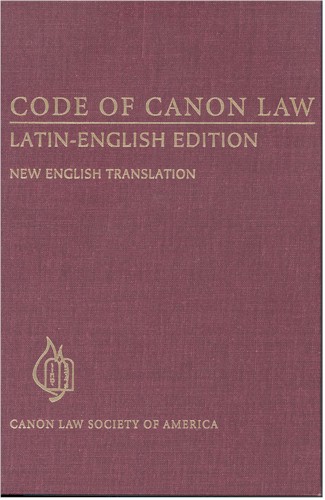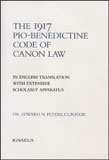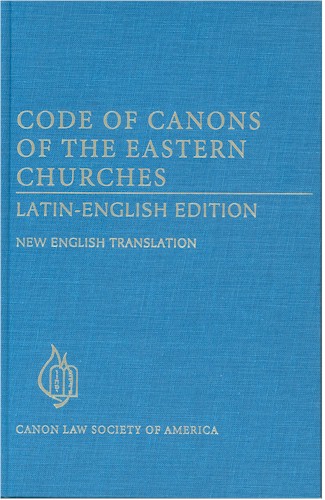|
To work for the proper implementation of canon law is to play an extraordinarily constructive role in continuing the redemptive mission of Christ. Pope John Paul II |
|
|
|
|
Resolution 1152 x 864 |
Updated 12 jan 2013 |
Review of Matthew Pinto, Did Adam and Eve Have Bellybuttons? (Ascension, 1997/2003) 270 pp. |
|
Edward Peters, Review of M. Pinto, Did Adam and Eve Have Bellybuttons? (1997/2003), in National Catholic Reg. (17-23 May 1998) 8.
|
Question-and-answer (Q&A) books are highly popular for two reasons:
First, they are a fast read. People are busy these days, and Q&A books
provide quick answers. Second, Q&A books are practical.
People want the options on and consequences to an action explained to
them in practical terms. Q&A books do this better than any other medium. Not
surprisingly, they have been used successfully in Catholic evangelization and
catechetical situations for some time. They have been somewhat less prominent
over the last 30 years, but it seems a good bet that they are going to make a
comeback and be popular for a long time to come.
There are essentially two concerns when it comes to evaluating such a
book. First, are the answers right? Speed and clarity are no substitute for
accuracy and reliability. Second, assuming the answers are correct, do they lull
the reader into a false sense of security by fostering the impression that a
quick and clear answer exhausts the possibilities raised by a particular
question?
Matt Pinto's delightful tour of questions posed by Catholic teenagers, Did
Adam & Eve Have Belly Buttons?, scores excellently in the categories of
brevity of reply and practicality of the questions. Hardly any of Pinto's pithy
answers to 200 questions runs even two full pages. Nor could his selection of
questions have been more practical because every one of them was posed by real
Catholic teenagers with real questions about the Faith. An experienced apologist
and youth minister with coast-to-coast credentials, Pinto knows what
young people are wondering.
Consider, for example, question 45: "Why does it seem that
evangelical Protestant teens have a closer relationship with Jesus than do
Catholic teens?" A real question, that, and honestly put. Pinto replies in
kind: "Some evangelical teens do seem to have a closer relationship with
Jesus than many Catholic teens, probably because evangelical Churches stress
personal conversion more than individual Catholics typically do. That's
unfortunate because the Catholic Church teaches as strongly as evangelicalism
the need for personal conversion." Pinto notes the Protestant practice of
"altar calls" and continues: "It is important to recall two
things about that sort of thing. First, that human experiences come and go. What
matters is one's continuing commitment to follow Jesus, with or without an
"experience." Second, Catholics have an "altar call" every
week--the call to receive Jesus in the Holy Eucharist. There is no more
personal relationship we can have with Christ in life than to be united with him
in the Holy Eucharist."
I came across no actual errors in the book, and considering the
incredible range of topics that these teens surfaced and that Pinto
forthrightly addressed, that alone is an accomplishment. True, there are some
questions whose answers seemed to me incomplete, but this is a Q&A book. A
few other answers seemed to raise, albeit secondarily, new problems. For
example, in responding to a question about one's possibly going to hell if, in
wartime, one kills another person, Pinto replies "fighting for your country
if it is a just war is a noble thing to do," etc.
Now, while Pinto's answer is quite sound, his throwing in that "just
war" criteria suggests that it is the citizen's duty to assess the legality
of the war and then to decide whether to cooperate with it. Suffice it to say
that that's not quite right, and such points, although beyond the scope of this
review and Pinto's book, should not be left dangling in future editions.
In no way, finally, does
Pinto's book lull the reader into a sense of complacency with brief answers to
tough questions. At several points Pinto incorporates research references into
his answers, and he provides a reliable guide to more detailed readings on
numerous topics at the back of the book. Pinto, in a true Catholic spirit, opens
his book with a prayer to the Holy Spirit, and closes it with sound advice about
how to examine one's conscience.
This is the kind of book that a Catholic parent can give with confidence to a Catholic son or daughter. Ditto for grandparents looking for something religiously reliable but not stuffy for their teenage grandchildren. And Confirmation sponsors looking for an age-appropriate gift for their confirmands upon reception of that sacrament will definitely want to check out this delightful text.
|





